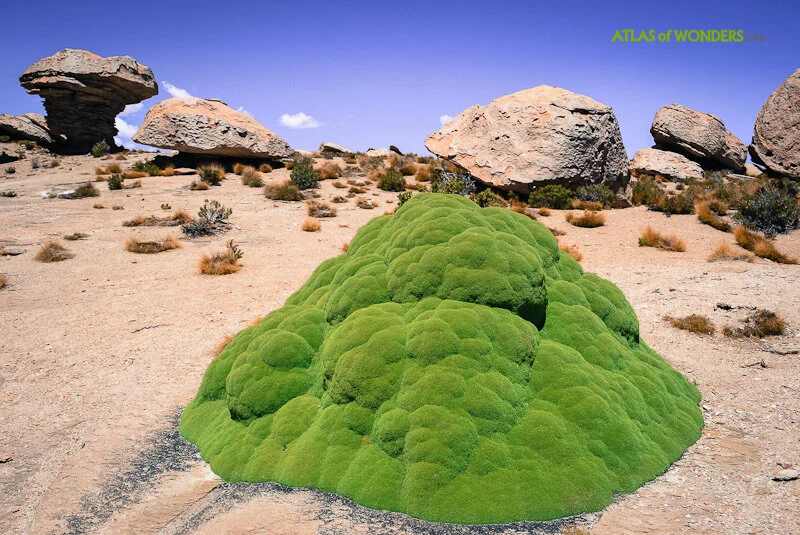Photo by Atlas of Wonders licensed under CC BY-NC-ND 2.0
Curious images of these strange green mounds make the rounds of social media every so often. What kind of alien life form is this? Is it a moss? Is it a fungus? The answer may surprise you!
These large, green mounds are comprised of a colony of plants in the carrot family! The Yareta, or Azorella compacta, hails from the Andes and only grows between 3,200 and 4,500 meters (10,500 - 14,750 ft) in elevation. Its tightly compacted growth habit is an adaptation to its high elevation lifestyle. Cushion growth like this helps these plants prevent heat and water loss in these cold, dry, windy environments.
Every so often, these mats erupt with tiny flowers, which must be a sight to behold! Photo by Lon&Queta licensed under CC BY-NC-SA 2.0
As you might imagine, these plants are extremely slow growers. By studying their growth rates over time, experts estimate that individual colonies expand at the rate of roughly 1.5 cm each year. By extrapolating these rates to the measurements of large colonies, we get a remarkable picture of how old some of these plants truly are. Indeed, some of the largest colonies are estimated at over 3000 years old, making them some of the oldest living organisms on the planet!
Sadly, the dense growth of the plant makes it highly sought after as a fuel source. Massive chunks of these plants are harvested with pick axes and burned as a source of heat. Due to their slow growth rate, overharvesting in recent years has caused a serious decline in Yareta populations. Local governments have since enacted laws to protect this species in hopes that it will give colonies the time they need to recover. Indeed, some recovery has already been documented, however, continued monitoring and management will be needed to ensure their populations remain viable into the foreseeable future.



